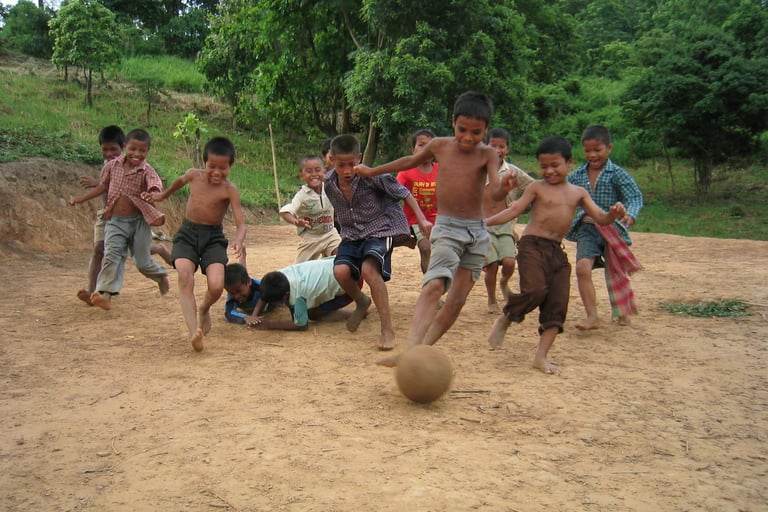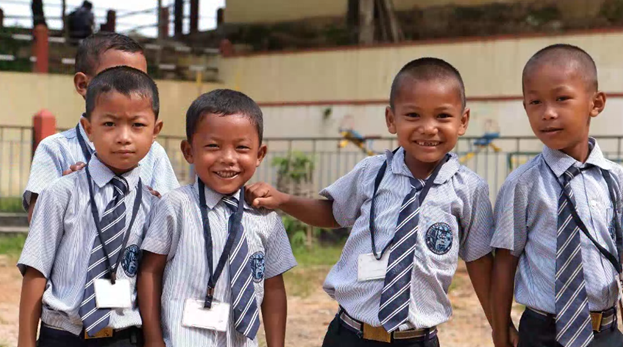School Education
The local communities served by these 28 schools have been most grateful to have good schools serving their children despite the fact that their villages are remote and often unreachable.
Numerous other communities have also been requesting the establishment of new schools in their areas. However, financial considerations, the real need, and the number of students who could enrol, have been key factors in determining the setting up of new schools. Financial and personnel limitations have been a major factor that has been limiting this effort.
ASSAM
Dehangi: G. M. St. Michael's M. E. School (Dima Hasao Dt.)
Didambra: Loyola Sec. School (Dima Hasao Dt.)
Diyungbra: St. Xavier's Hr. Sec. School (Dima Hasao Dt.)
Gunjung: T.M Good Shepherd Hr. Sec. School (Dima Hasao Dt.)
Maibang: St. Xavier's Hr. Sec. School (CBSE) (Dima Hasao Dt.)
ARUNACHAL PRADESH
Bana: St. Xavier's M. E. School (E. Kameng Dt.)
Bhalukpong: St. Xavier's Hr. Sec. School (ICSE) (W. Kameng Dt.)
Buragaon: St. Xavier's M. E. School (W. Kameng Dt.)
Palizi: St. Xavier's Sec. School (W. Kameng Dt.)
Thizino: St. John Berchman's M. E. School (W. Kameng Dt.)
MANIPUR
Liyai: Loyola Sec. School (Senapati Dt.)
Majuron: St. Xavier's Sec. School (Churachandpur Dt.)
Moirang: St. Xavier's Hr. Sec. School (Bishnupur Dt.)
MEGHALAYA
Dawagre: Loyola Sec. School (E. Garo Hills Dt.)
Jalaphet: Syrlien Sec. School (E. Jainitia Hills Dt.)
Maweit: St. Mary's Sec. School (W. Khasi Hills Dt.)
Umbir: St. Stephen's U. P. School (Ri Bhoi Dt).)
Umoid: St. Xavier's Hr. Sec. School (S.W. Khasi Hills Dt.)
Williamnagar: Loyola Hr. Sec. School (E. Garo Hills Dt.)
NAGALAND
Jakhama: Loyola Hr. Sec. School (Kohima Dt.)
Jakhama: Campion U. P. School (Kohima Dt.)
Kigwema: Edmund U. P. School (Kohima Dt.)
Khuzama: Sacred Heart Sec. School (Kohima Dt.)
Kikruma: St. Peter Prim. School (Phek Dt.)
Pfutsero: Nazareth Hr. Sec. School (Phek Dt.
Phesama: St. Paul's Sec. School (Kohima Dt.)
Porba: St. Joseph Prim. School (Phek Dt.)
Sakraba: Peace Centre Prim. School (Phek Dt.)
The Background
The 28 Schools sponsored by Purvanchal Pragati
Community Engagement
Most of the schools offer residential facilities for both male and female students. These hostels make it possible students from remote villages to access the quality all-round education offered in these schools. The hostels also make it possible to promote sports, drama, singing and art as the students are "always around."
A shortage of water for many months each year, and the absence of reliable and steady electricity are two problems that impact the hostel students.
Hostels


The Purvanchal Pragati Samaj sponsors a network of 28 schools, many with hostels for boys and girls, in five states of northeast India. The focus has always on supporting local indigenous communities in their struggle to overcome the challenges that impede their growth and development. In practice, it means establishing ways to promote sanitation and health, social and self-employment skills, and job accessibility.
Purvanchal Pragati Samaj sponsors schools that are committed to excellence, focusing on the all-round development of students. These schools integrate sports, performing arts, value education, and service, as integral components of their school program.
In keeping with the guidelines of the New Education Policy (NEP-2020) introduced by the Government of India in 2022, these schools are preparing themselves for the changes that have been mandated, setting up the additional infrastructure that is required including updated libraries, computer and science laboratories, and building new resource rooms and workspaces. The schools are also ensuring that their teaching staff possess the necessary academic qualifications to meet these standards.


